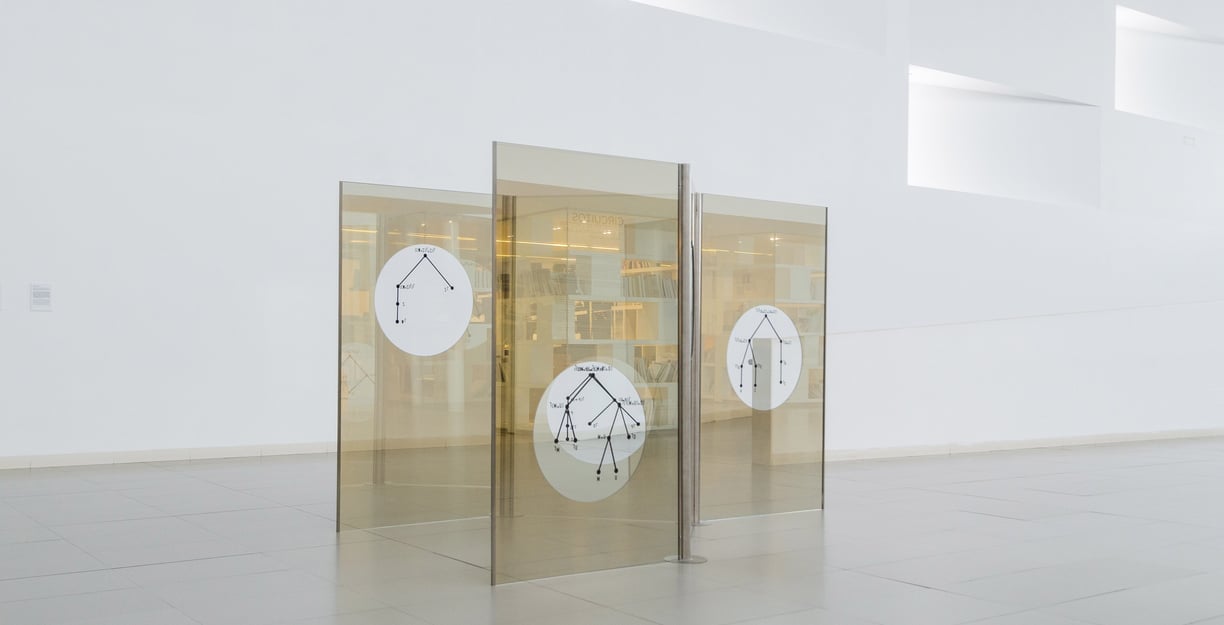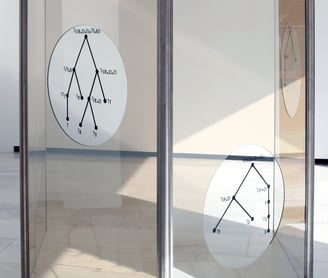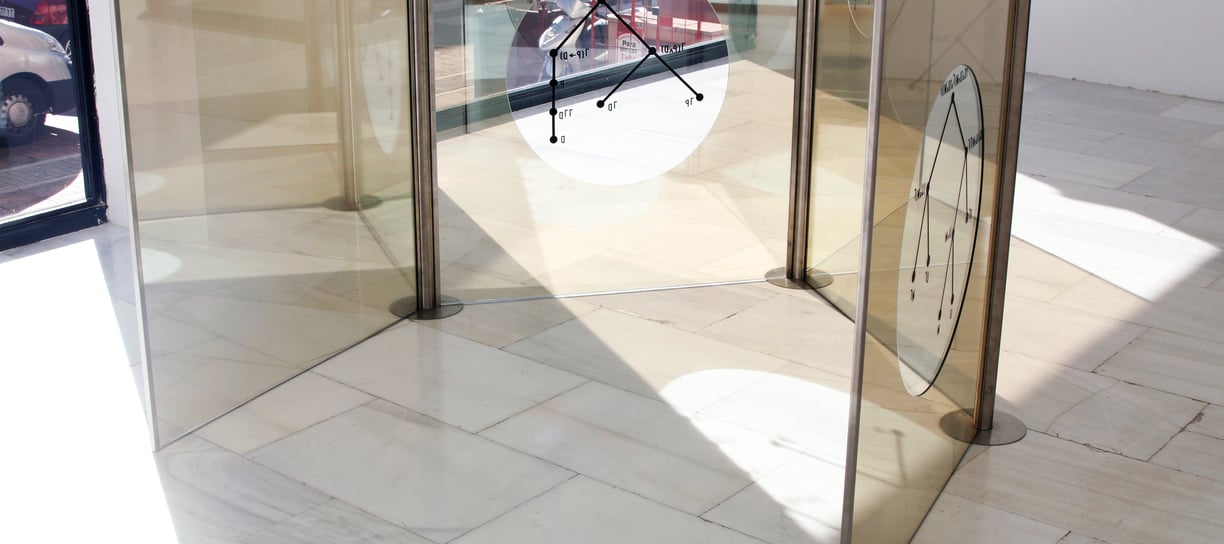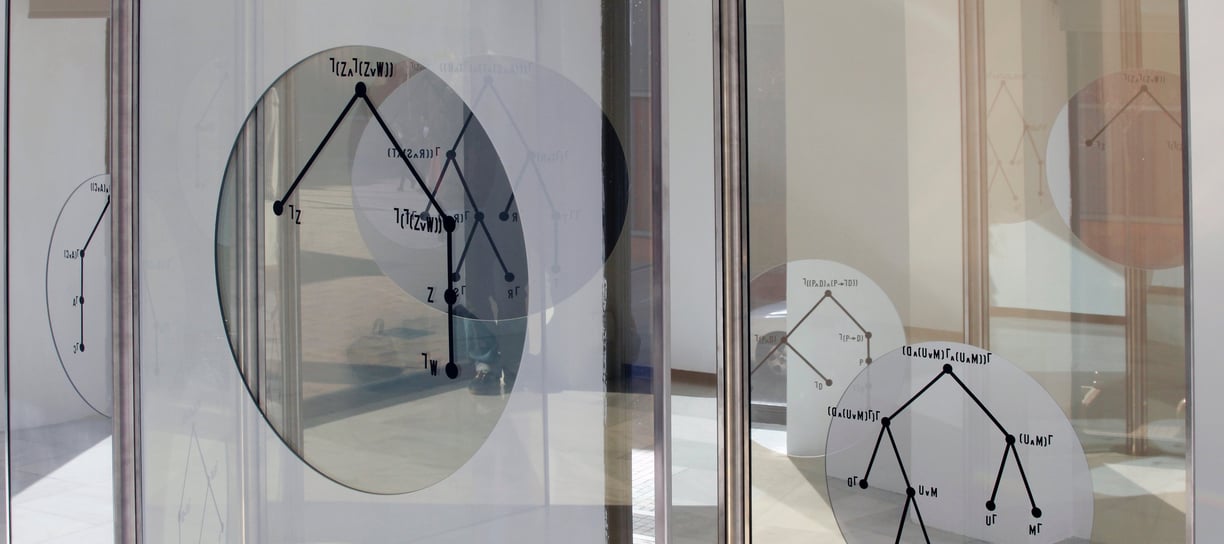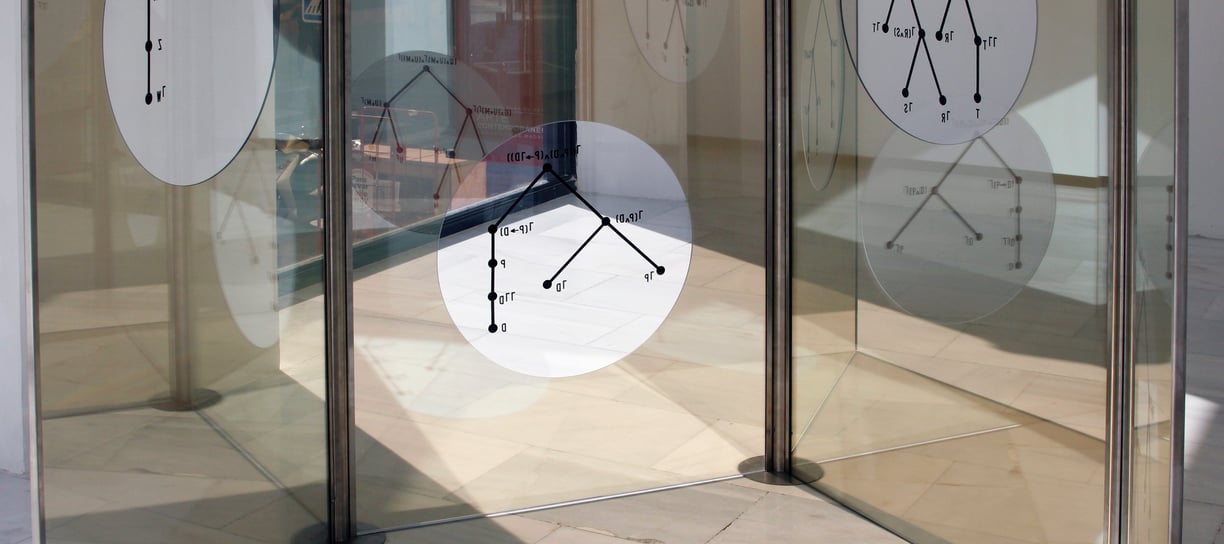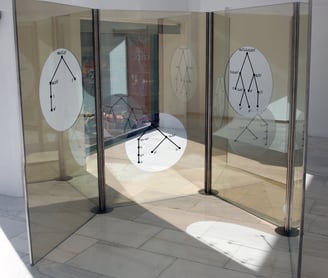En este proyecto, el material del cristal es intervenido para hablar del papel de la arquitectura en el desarrollo de la posmodernidad dentro del espacio urbano.
Esta pieza rinde homenaje al artista Gordon Matta-Clark, y a su forma personal de entender el espacio. Se ha tomado como referencia su arquitectura sectorial, donde el artista dejaba a la vista el interior delos edificios y casas unipersonales. Tal y como expone Rosalind Krauss acerca del artista: “Los recortes de Matta-Clark son la manifestación física de una causa”.
En el proyecto se han utilizado los ventanales de cristales-espejo, claves en gran parte de la arquitectura posmoderna. Un estilo que ha sido definido como aquel que “se asienta en la destrucción del tejido urbano tradicional y de su vieja cultura de vecindario, mediante la ruptura radical del nuevo edificio utópico modernista con el contexto que le rodea”, según Fredric Jameson.
En otro de los textos cumbre de Fredric Jameson el autor expone varias antinomias características de la posmodernidad, mostrándolas como contradicciones ocultas.
Emulando el procedimiento de los trabajos del artista Gordon Matta-Clark, se han eliminado las coberturas de espejo de varios ventanales que cubren las fachadas de estos edificios posmodernos, permitiendo la visibilidad sin ningún tipo de obstáculo a través de ellos. De una forma retórica, se eliminan los retazos de las antinomias que ocultaban las contradicciones internas del capitalismo tardío. Además, en cada uno de esos huecos desvelados, se han dibujado formulas lógicas que obtienen como resultado contradicciones matemáticas.
“La arquitectura fue la forma más notoria que hizo florecer la concepción de posmodernismo” - Fredric Jameson
In this project, the material of glass is intervened to talk about the role of architecture in the development of postmodernity within the urban space.
This piece pays homage to the artist Gordon Matta-Clark, and his personal way of understanding space. It has been taken as a reference to his sectorial architecture, where the artist left the interior of buildings and single-family houses in view. As Rosalind Krauss says about the artist: "Matta-Clark's cut-outs are the physic manifestation of a cause".
The project uses the mirror-glass windows that are key to much of postmodern architecture. A style that has been defined as one that "is based on the destruction of the traditional urban structure and its old neighborhood culture, through the radical rupture of the new modernist utopian building with the surrounding context," according to Fredric Jameson.
In another of Fredric Jameson's seminal texts, the author exposes several characteristic antinomies of postmodernity, showing them as hidden contradictions.
Emulating the procedure of Gordon Matta-Clark´s artworks, the mirrored coverings of several windows that cover the facades of these postmodern buildings have been removed, allowing unobstructed visibility through them. In a rhetorical way, the remnants of the antinomies that concealed the internal contradictions of late capitalism are eliminated. Moreover, in each of those gaps unveiled, logical formulas have been drawn that result in mathematical contradictions.
"Architecture was the most notorious form that made the conception of postmodernism flourish" - Fredric Jameson
REQUIEM FOR A PHYSICAL MANIFESTATION OF A CAUSE (2015)
- 5 cristales intervenidos con vinilo. 180 x 100 cm c/u
- 5 cristales reflectasoles con taladro. 180 x 100 cm c/u
- Acero
- 5 glass panes intervened with vinyl. 180 x 100 cm each
- 5 reflective sunglasses with drilled holes. 180 x 100 cm each
- Steel
